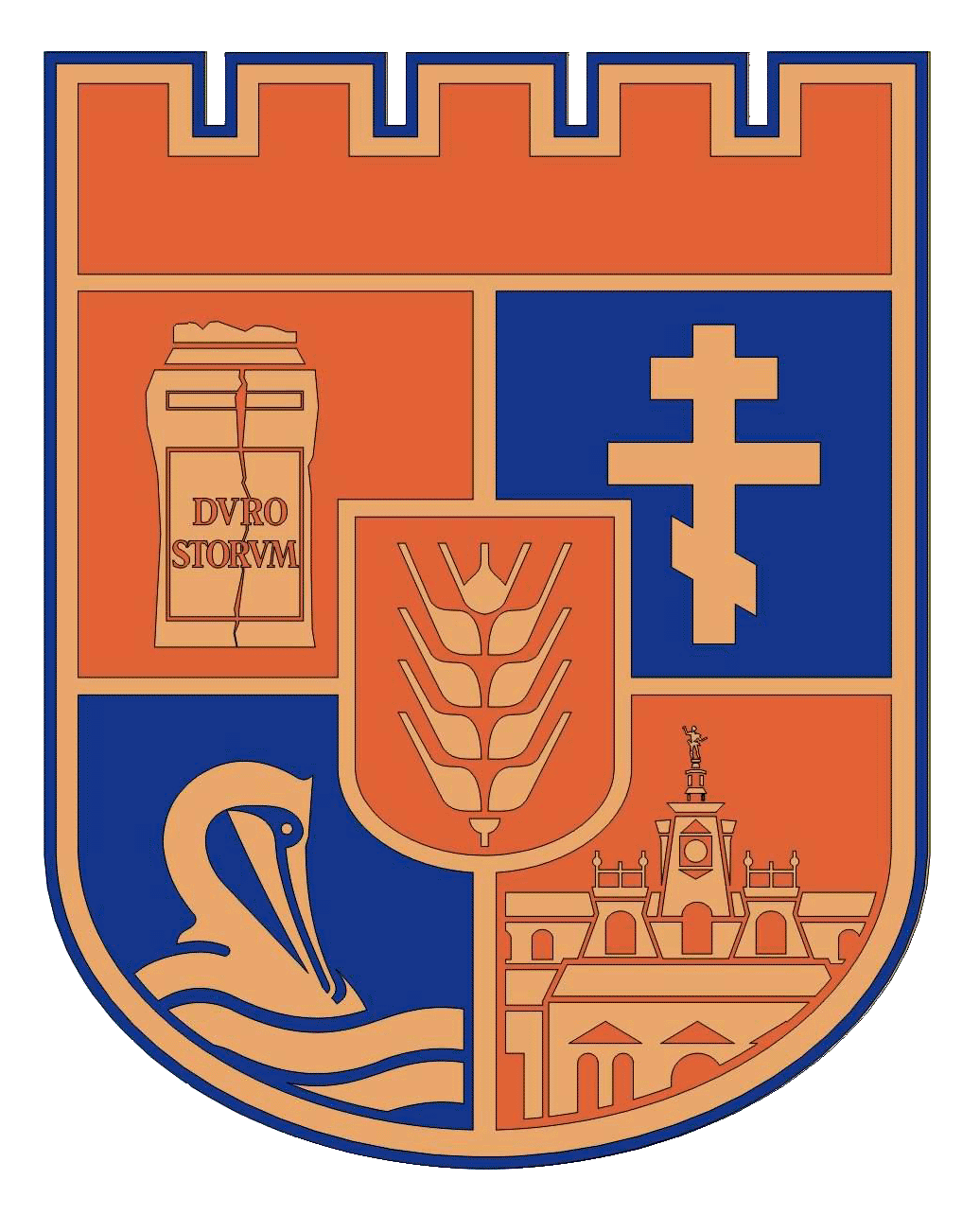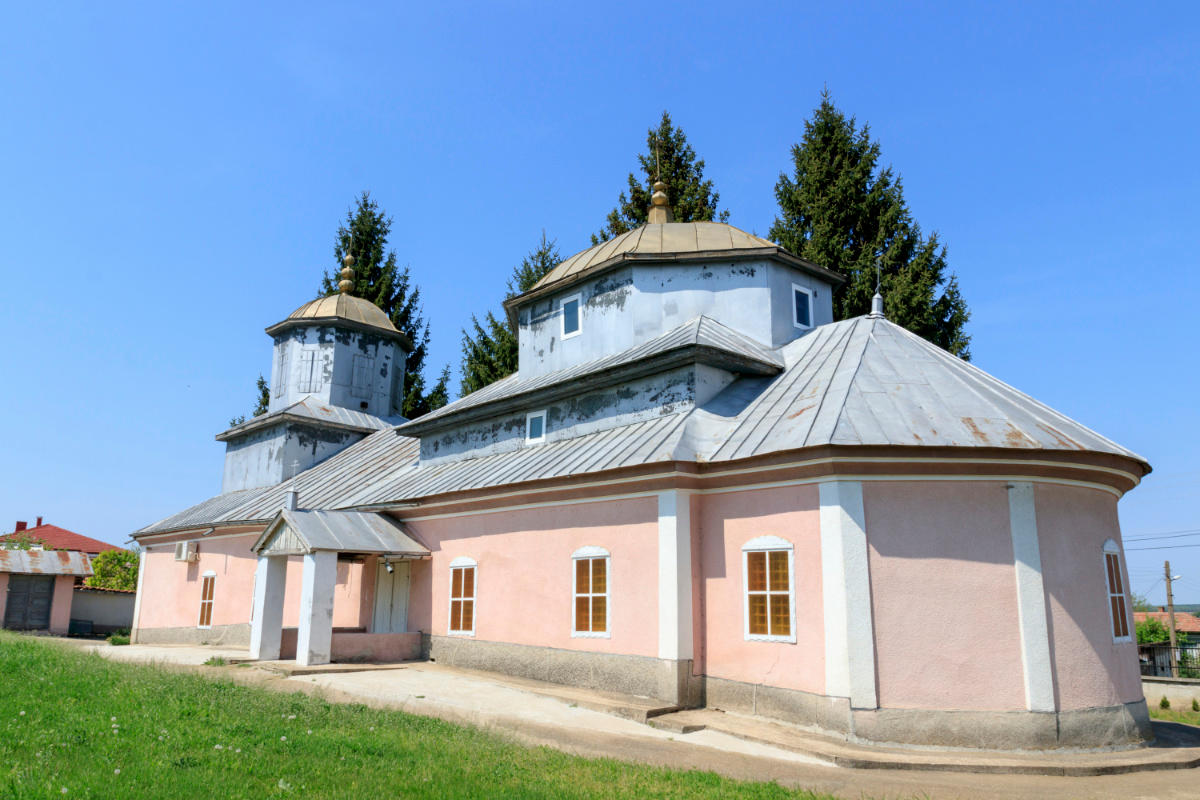Russian Orthodox Church Pokrov Bogorodichen
Category TempleLOCATION
The Russian Orthodox Church Pokrov Bogorodichen is located in Tataritsa (formerly a village, nowadays a district of the Aydemir village), 6 km west of Silistra. There is a bus three times a day leaving from the Sofia Central Bus Station to Silistra, as well as a train three times a day from the Sofia Central Railway Station.
All buses traveling to Rousse, Tutrakan, Sitovo and Glavinitsa pass through the village of Aidemir.
No. 2 - route: Roman tomb, DAP, Technopolis, Vaptsarov, Yanko Todorov, San Stefano, Police, Stara Bus Station, Hospital, Izvori, Aurora, Chrom, Mekom, Dolenki, Center, Hristo Botev Primary School, Baba Yana, ;
No 22 - route: DAP, Triangles, East, Technopolis, Vaptsarov, Yanko Todorov, San Stefano, Police, Stara Bus Station, Izvor, Aurora, Chrom, ZK Aydemir, Monastery turnout, Srebarna village, Vetren village.
DESCRIPTION
The church has a rectangular shape. An old Russian cross is placed on the roof. The church has a bell tower with seven bells. The temple has three parts: an altar, a middle part and a narthex. It was declared a monument of culture in 1929. Valuable icons from the period of decline of the Tryavna art school and iconography are preserved in the temple.
HISTORY
In the XVII century, the Don Cossacks from Russia, who were driven out by Peter the Great’s reforms, arrived in Tataritsa. The refugees built their own church there.
They were proud of their heritage and married only between themselves, not mixing with other nations. Today, the descendants of the Don Cossacks speak Russian in their. They also speak Bulgarian, but with a Russian accent. The settlers from the the Russian Empire found shelter in Turkey after the suppression of the so-called Bulavin rebellion in Russia and the founding of Tataritsa.[1]
In 1829 Russian soldiers built the Church of the Holy Trinity in the Silistra village of Aidemir. It was consecrated in 1834 by Metropolitan Gregory, on June 11, 1834, on the day of celebrating the feast of the Holy Trinity, the Pentecost. Even today, there are valuable objects left behind - candlesticks made of gunpowder, valuable books and manuscripts. Near the church there once was a cemetery of Russian soldiers. This is inferred by the tombstones and crosses found over the years. Five years ago from these stones, Father George made a fountain in the churchyard. The bell was once placed on a fruit tree. The new bell, however, has cracked over the years and was melted, but people say it no longer has the old sound.[2]
In the beginning, the church was only a chapel for worship, but later it was expanded, sanctified and given the status of church. The temple preserves valuable icons from the period of the decline of Tryavna art school and iconography.
The Tryavna School is an art school from the period of the Bulgarian Revival, which dates back to 17-18 century and originated in the town of Tryavna. The largest collection of her works is exhibited at the Museum Gallery at the Royal Children's Sanatorium in Tryavna. The founder of the Tryavna Art School is Vitan Karchov, whose family is from Tryavna. He was the first master of the family and worked in the first half of the 17th century. Karchov trains his children, who inherit his work. The mastery of the Tryavna School passed through the generations, with some of the last representatives being prominent wood-carvers. Thus Vitan's family is among the oldest and most famous Bulgarian families of wood-carvers and icon-painters. Other well-known icon painters of this school are the Daskalovtsi, Zaharievtsi and Karakanchevtsi families. The heritage of the Tryavna School has three main directions - iconography, carving and building craftsmanship. The work of the Tryavna icon-painters is focused on the icon-painting, but gradually progresses towards the art of cavalry art. The main difference between the artists of this school and the other Renaissance schools is that the Tryavna masters are mostly icon-painters.[3]
SITE SIGNIFICANCE
A monument of culture of local significance.
SITE CLASSIFICATION
Religious site
[1] Pateshestvia.net <http://pateshestvia.net/pateshestvai/130> (24.04.2018)
[2] News.bnt.bg <http://news.bnt.bg/bg/a/tsrkvata-v-selo-aydemir-e-stroena-predi-poveche-ot-180-godini-ot-ruski-voynitsi> (24.04.2018)
[3] Wikipedia.org <https://bg.wikipedia.org/wiki/%D0%A2%D1%80%D0%B5%D0%B2%D0%BD%D0%B5%D0%BD%D1%81%D0%BA%D0%B0_%D1%85%D1%83%D0%B4%D0%BE%D0%B6%D0%B5%D1%81%D1%82%D0%B2%D0%B5%D0%BD%D0%B0_%D1%88%D0%BA%D0%BE%D0%BB%D0%B0> (24.04.2018)




